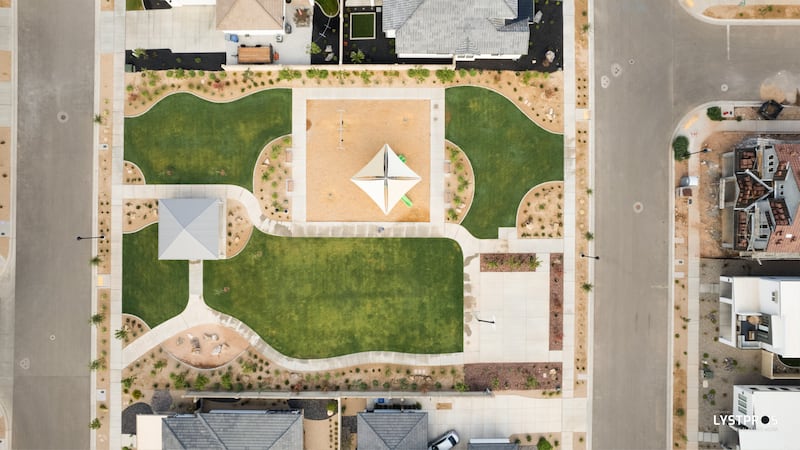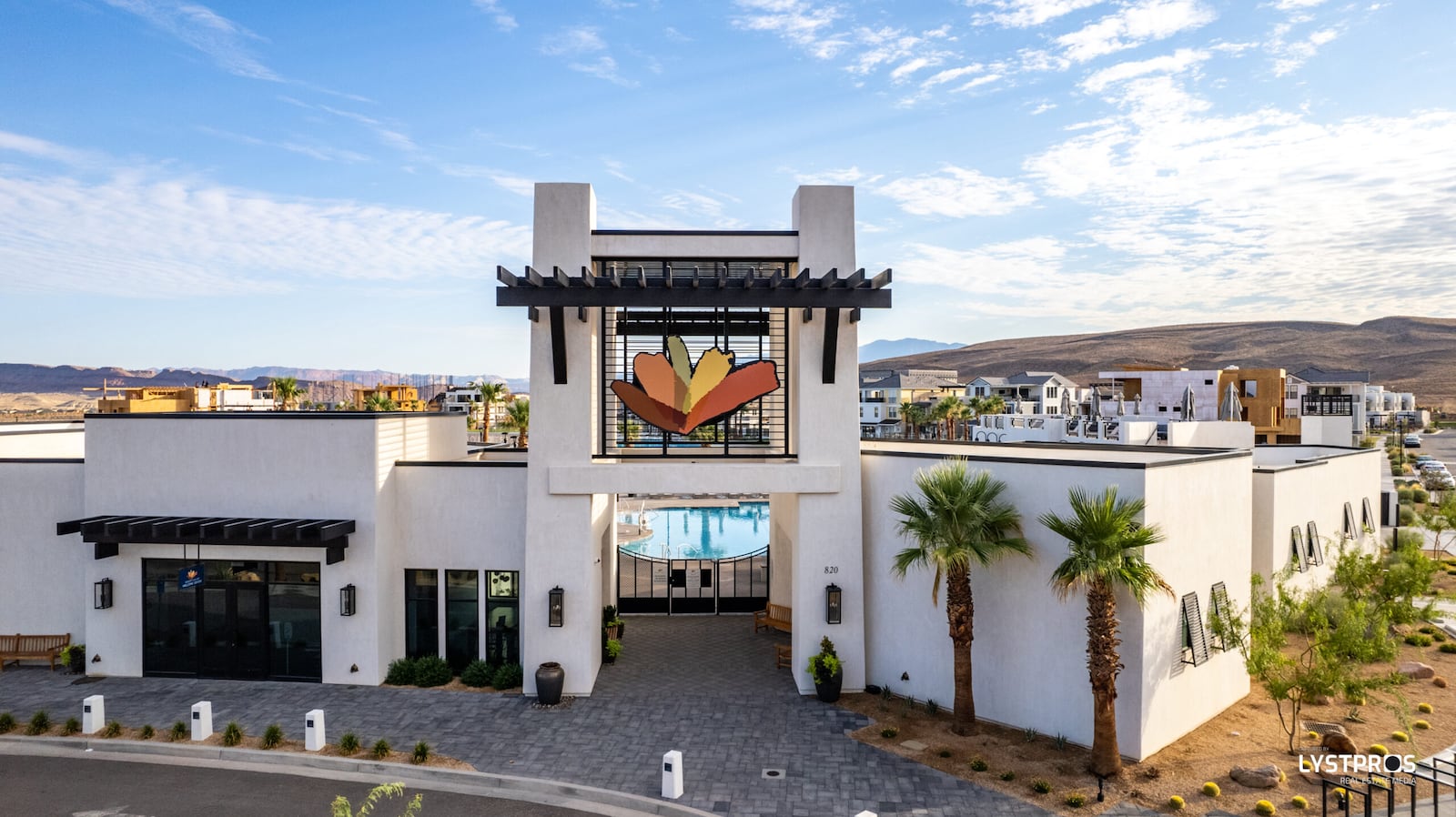Photo courtesy of Desert Color
Desert Color, a new master-planned community, is rising just outside St. George. Echoing previous endeavors like Daybreak, Desert Color purports to be a testament to innovation, sustainability and the drive to craft something new amidst the vast desert landscape.
The concept of master-planned communities is not entirely foreign to Utah. However, while planned communities have sprouted across various states, Desert Color brings its own unique twist to the table.
Unlike Florida, which accounts for almost half of the sales among ranked communities, and Texas, trailing behind with nearly 30 percent, Utah’s entries into this realm offer a fresh perspective. South Jordan’s Daybreak sits on the list of top-selling master-planned communities at No. 39 out of 50.
Beyond ambitious renderings and blueprints lies the question: Does the desert hold the water to support this grand vision? It’s a question of paramount importance, and Desert Color takes it seriously. Collaborating with the City of St. George, the Washington County Water Conservancy District and the State of Utah, the community is determined to manage its water resources responsibly. The aim is not just to quench immediate thirst but to ensure the well doesn’t run dry in the future.

Photo courtesy of Desert Color
Desert Color’s water stewardship vision is a comprehensive strategy readily available on its website. From community-level participation in water planning to utilizing water-saving technologies, Desert Color touts sustainability as a guiding principle. According to their stewardship vision, they anticipate using up to 40 percent less culinary water than conventional developments in Washington County. How? By implementing xeriscape landscaping standards, embracing secondary water sources for outdoor use, and rethinking land usage for efficient irrigation.
A striking feature of Desert Color, Utah’s first Localscapes-endorsed community, is its bold move toward recreational water features. Why, one might ask, in a desert where water is a precious commodity? The answer is twofold: differentiation and conservation. But beyond this, Desert Color’s meticulous planning reveals that a well-designed recreational water feature could use up to 11 percent less water than an equivalent turf grass park. With evaporation technologies, this reduction could extend to a remarkable 24 percent.
Desert Color’s recreational water doesn’t come from thin air. It’s from a private well filled with brackish water unfit for consumption. Yet, this water is set to find a purpose. After undergoing a cleaning process, it will serve as a secondary water source for irrigation. It’s one way to make the most out of an otherwise undesirable resource.
Development-wide xeriscaping, water-wise vegetation and a comprehensive secondary water distribution system underscore the project’s dedication to sustainable practices. This desert community isn’t just a mixed-use development; it’s angling to be a blueprint for responsible growth.
As one of Utah’s fastest-growing cities, St. George paints the backdrop for Desert Color’s evolving narrative, underscoring the dynamics of a region in flux. Desert Color’s emergence stands as a testament to Utah’s spirit of innovation, fusing sustainability with urban living.

